AP State Syllabus AP Board 7th Class English Textbook Solutions Chapter 6A A Hero Textbook Questions and Answers.
AP State Syllabus 7th Class English Solutions Chapter 6A A Hero
7th Class English Chapter 6A A Hero Textbook Questions and Answers
I. Read the following proverb and answer the questions that follow.

Question 1.
You may have heard of this proverb.before. Do you know what it means?
Answer:
This proverb says that timid or coward people cannot achieve anything. Only the brave or
the courageous can get on what they want. Here ‘Fortune’ means good result or benefit and this goes to the brave people.
Question 2.
Tell the class why the government rewards the brave and adventurous children.
Answer:
The government rewards the brave and adventurous children so as to inspire the younger ones to be brave like them and do adventurous things and to tell that the country needs the brave but not the timid.
![]()
Question 3.
Are you aware of any brave boy or girl who may have shown an act of bravery? Talk about his/her bravery to the class.
Answer:
Yes, my friend Chennakesava Sarma has shown an act of bravery. He saw a drowning child in the river Krishna through he was not a good swimmer, he at once jumped into the river and caught hold of the child by his hair. Later he shouted loudly. Some people nearby came and rescued both of them.
I. Answer the following questions.
Question 1.
According to the newspaper’s report, who fought with the tiger?
Answer:
According to the newspaper’s report, a village lad fought with the tiger.
Question 2.
Can you say why Swamis father read the hews to his son?
Answer:
His father read the news for Swami so that it would inspire his son and that his son would also do courageous things.
Question 3.
Did Swami believe the story? Give reasons for your answer.
Answer:
No, Swami did not believe the story. He told his father that the person fought with the tiger must be a grown-up person but not a boy. He felt that a boy could not fight with a tiger.
Question 4.
What did Swami’s father ask him to prove?
Answer:
Swami’s father asked him to prove his bravery by sleeping alone that night and thereafter too in his office room.
Question 5.
Why did Swami try to change the topic when his father asked him to sleep alone?
Answer:
Swami tried to change the topic because he was afraid to sleep alone as he had always slept beside his granny. So, he wanted to divert his father’s attention to cricket.
![]()
II. Read the following sentences and say whether they are true or false.
Write T for true and F for false statements in the brackets. Correct the false statements.
1. Swami said that he would sleep alone from the next week. ( )
2. Swami’s father looked like a ghost in darkness. ( )
3. When Swami was snoring, his grandmother pulled the blanket away. ( )
4. Swami was really afraid of darkness. ( )
5. Swami wished that the tiger had killed the boy. ( )
Answer:
1. F
2. T
3. F
4. T
5. T
Correction of false statements:
1. Swami said that he would sleep alone from the first of next month.
3. When Swami was snoring, his father pulled the blanket away.
III. Tick the correct option to make the sentence true.
1. Swami was almost faint with fear because
a) his father would beat him.
b) he was afraid of ghosts.
c) a ghost entered his room.
d) he had a terrible dream.
2. Swami clutched the leg of ………………………….
a) his father.
b) his grandmother.
c) a chair.
d) the thief.
Answer:
1. b (✓)
2. d (✓)
![]()
Vocabulary
I. Pick out the synonyms from the story for each of the following words.
1. clear
2. bravery
3. shameful
4. hide
5. upset
6. argued
7. swore
8. unpleasant
9. tapped
10. damage
Answer:
1) clear: detailed
2) bravery: courage
3) shameful: disgraceful
4) hide: cover
5) upset: pained
6) argued: mumbled/exclaimed/opined
7) swore: cursed
8) unpleasant: bitter
9) tapped: patted
10) damage: risk
II. Read the conversation given below and fill in the blanks with appropriate words from the box.

Ruchira: I don’t know why the teacher ……(1)…… to give his mobile number?
Suhas: He might be worried that you would ……(2)…… him with your phone calls.
Ruchira: I have great ……(3)..… for him. I will never behave in a ……(4)…… manner.
Suhas: I am ……(5)…… that our teacher will not give his number. Anyhow, I like your ……(6)…… We are all ……(7)…… him.
Ruchira: I don’t think our teacher is ……(8)…… but he says everything ……(9)…….
Once he gave me a wonderful gift so I am always ……(10)…… to him.
Answer:
1) hesitated
2) disturb
3) respect
4) disgraceful
5) certain
6) courage
7) afraid of
8) terrible
9) sternly
10) grateful
![]()
III. Read the following clues given below to complete the word ladder.

Clues
1. Sandhya said _____________ that she hated him.
2. Sridhar is a ____________ boy of 10 years old.
3. Jyothi used to sleep beside her _______________.
4. The garden is full of ________________ coloured flowers.
5. I met my friend Kumar on my _________________ home.
Answer:
1) crossly
2) young
3) granny
4) yellow
5) way
IV. Proverbs
A proverb is a short sentence, usually known to many people, stating something commonly experienced or giving advice. Here are some English proverbs:
- Tit for tat.
- Where there is a will there is a way.
- A bad workman always blames his tools.
Every language has proverbs. In Telugu we call them ‘saamethalu’. Here is one example from Telugu:
‘kukka kaatuki cheppu debba’. It is important to know the meaning of a proverb before you use it.
![]()
Match the parts under A and B to make some proverbs. You can use the clues given within the brackets.
A B
1. An apple a day(search for a profession) [ ] a. is a friend indeed.
2. A friend in need (rhymes with friend) [ ] b. saves nine.
3. Failure is (search for ‘achievement’) [ ] c. mightier than the sword.
4. A stitch in time (search for a number) [ ] d. keeps the doctor away.
5. The pen is (search for a weapon) [ ] e. the stepping stone to success.
6. Empty vessels (search for noise) [ ] f. the mighty ocean.
7. Little drops of water make [ ] g. seldom bite.
8. Honesty (ends with ‘cy’) [ ] h. while the sun shines.
9. Make hay (search for planet) [ ] i. is the best policy.
10. Barking dogs (search for what dogs do) [ ] j. make much noise
Answer:
l) d
2) a
3) e
4) b
5) c
6) j
7) f
8) i
9) h
10) g
Grammar
Simple Past Tense:
The second form of the verb (V2 form) is used as simple past tense. It is used to express that some action was completed or not completed in the past.
In Affirmaive sentences, only the V2 form, ‘did + V1 form’ pattern is used for the simple past tense.
Example :
1. I went to Vikarabad yesterday.
2. He came to see me last night.
3. I did not go to school last Monday.
4. Sita did dance (Emphasizing the action) on this stage last month.
In interrogative sentences (Questions) and negative sentences, ‘did + V1‘ pattern is used for the simple past tense.
Examples :
1. When did you see this film?
2. Did you give him the book yesterday?
3. I did not write the exam last Sunday.
4. Guruvardhan did not come here last Friday.
![]()
Past Continuous Tense:
Structure of this tense is as follows, was/were + Verb with ‘ing’ form.
Ex: was going, were doing, was singing, were writing, was teaching etc.
Use: We use the past continuous tense to express that certain action was going on at a certain time in the past.
Examples: Affirmative sentences
1. At 11 a.m. yesterday, I was writing the exam.
2. My mother was cooking when the postman came.
3. We were chatting when our English teacher entered the classroom.
Negative sentences
1. They were not studying at this time last night.
2. We were not playing when he arrived here.
Questions (Interrogative sentences)
1. What were you doing then?
2. Were they playing at this time yesterday?
3. Was he sleeping in your period this morning?
Look at the following sentences from the text.
1. Father was sitting under the lamp and reading the newspaper.
2. He looked over the newspaper.
Sentence 1 is in the past continuous form. It coveys that the action was in progress at a particular point of time in the past.
In sentence 2, the verb ‘looked’ is in the simple past tense. It shows that the action was completed in the past.
I. Pick out 5 sentences from the story that use the Simple Past Tense and 5 sentences that use the Past Continuous Tense. Write them down in your notebook.
5 sentences that use the Simple Past Tense:
1) The newspaper gave a detailed account of the boy’s fight with the tiger.
2) At last, some people came that way and killed the tiger.
3) Swami rose quietly from his place.
4) He cursed the newspaper that had printed the tiger’s story.
5) Swami hurriedly got up and spread his bed under the bench and crouched there.
5 sentences that use the Past Continuous Tense:
1) Father was standing over him.
2) Father was only joking.
3) A tiger was chasing him.
4) Something was moving in the darkness.
5) Swami was following the whole conversation from under the blanket.
![]()
II. Read the following paragraph and fill in the blanks with the simple past or the past continuous forms.
While Swami’s father ………………… (read) the newspaper, Swami …………………(listen) to it. His father ………………… (ask) him to sleep alone. But he ………………… (be) afraid of ghosts. He ………………… (want) to sleep in his grandmother’s room. While he ………………… (sleep), he …………………(have) a terrible dream. A tiger ………………… (chase) him and he …………………(try) to escape.
Answer:
1) was reading
2) was listening
3) asked
4) was
5) wanted
6) was sleeping
7) had
8) was chasing
9) was trying
Writing
I. Summarize the story using the following hints.
Swami ___ the news report ___ about a boy’s fight ___ father’s advice ___ sleeps in his grandmother’s room ___ father insists on sleeping alone ___ a terrible dream ___ catches a thief ___ becomes a hero.
Answer:
One day Swami’s father read out some news in some newspaper for his son, Swami. The news was about the bravery of a village lad who was returning home by the jungle path. The newspaper gave a detailed account of the boy’s fight with the tiger.
After listening to the news, Swami said that a boy could not be brave enough to fight with a tiger. Then Swami’s father asked him to prove his courage. For that, his father advised him . to sleep for some nights alone in his office room. He wanted his son to do it that night itself. But Swami went into the porch and slept beside his granny. Swami never slept alone. He always slept beside his granny.
Then his father came to Swami and woke him up. He insisted Swami on his sleeping alone in the office room that night. Swami tried to escape but in vain. So he had to sleep alone in darkness in his.father’s room that night. Then Swami had a terrible dream. He could not sleep. Suddenly he heard that someone was coming towards him. He thought he was a ghost. So, at once, to protect himself, Swami bit into the knee of a thief. The thief cried out. Father and a servant came and caught the thief. Swami became a hero.
![]()
II. Write about an act of bravery that you or your family member or any one of your friends may have shown at some stage in your life.
An act of my bravery
My father runs a jewellery shop. The shop is open on all days. But it is closed on Sundays.
One Sunday evening, I was returning home. after playing cricket with my friends. I was coming on my bicycle. On my way home, when I came to my father’s shop, I found my father’s shop was kept open. I was surprised to see it open as it was a Sunday. I got down my bicycle and put it behind a tree and stood there silently to see what was going to happen. A few minutes later, I saw two thieves coming from the shop with a bag of jewellery and keeping it in their car, kept outside the shop. They later, went again into the shop to bring some more.
At once, without any hesitation, I ran towards the car and took out the air from all the tyres. Then I rode on my bicycle to the nearby police station and informed the police about the theft.
The police took me in their jeep and came to the spot. Seeing the police, the thieves began to run. But the police chased them and caught hold of them. All our jewellery was kept back in the shop and then it was locked.
The police congratulated me on my act of bravery. All my friends and neighbours praised me for my bravery. I felt happy as I had saved our property.
III. Change the story of ‘A Hero’ into a drama and enact it.
- Read Swami’s story once again.
- Identify the characters.
- Pick out the dialogues of the characters.
- Identify the locations of the events.
- Decide scenes and setting accordingly.
- Assign roles to the members of the groups.
- Enact the drama before the whole class.
![]()
Answer:
Scene – I
Swami’s house with father sitting in a chair and reading a newspaper and his son Swami standing behind him.
Characters: Swami, his father and his granny.
Father: listen, Swami! I’ll read out an interesting news for you.
Swami: What’s it, Dad?
Father: it’s about the bravery of a village lad who was returning home by the jungle path.
Swami: What’s there in it about his bravery?
Father: He came face to face with a tiger and fought with it. Later he climbed on tâ thetop branch of a tree and stayed there for half-a-day. Later some village people came that way and killed the tiger.
Swami: That couldn’t be. I think he must be a grown-up person.
Father: Don’t think so. Age and strength don’t matter with regard to courage/bravery.
Swami: Suppose I am very brave. Can I fight with a tiger?
Father: O.K. I will test your courage. Tonight, sleep alone in the dark in my office room and prove your bravery.
Swami: I will do it next month. Please put it off.
Father: No, come on with me.
(Father puts Swami alone in his office room. He leaves him in the dark but keeps the doors open)
Scene – II
Place: Father’s office room. Swami is sleeping under a bench.
Characters: Swami, a burglar, Father.
Swami to himself: I don’t know why father is cruel to me in this manner. I wish the tiger had not spared the village lad.
A burglar to himself: The door is open. I will enter the room and steal the valuable things. (The burglar walks ¡n and steals something. He comes near the boy.
(Swami hears the sound of his walkin close to him.)
Swami to himself: What is this sound? I think a devil is coming to kill me. I must do something now. I will dig my teeth into its leg.
(When the burglar comes nearer, Swami digs his teeth into the knee of the burglar.)
The burglar: Oh! I was bitten.
(Hearing the sound, Father and a servant come into the room and catch the thief.)
Scene – III
Place: School
Characters: Swami, his friends, a teacher and the Headmaster.
Teacher: Oh! You have acted bravely. I appreciate you.
Swami: Thank you, teacher.
Friends: Swami, you have done a marvellous thing. Congrats.
Swami: It’s O.K.
H.M.: Swami, you are a true scout. You have proved y.our bravery. We are proud of you.
Swami: Thank you, Sir.
(But the next day on wards, Swami sleeps in his usual place.)
![]()
IV. Have a discussion in the whole class on how the performance could be improved in terms of delivery of dialogues, costumes, action, settings, etc.
A Skit on ‘A Hero’.
The performance could be improved and made humorous if it was as follows.
When father exits the office room –
Swami: I am afraid I can’t be alone. What should I do? idea! I shall go unnoticed to himself into my father’s bed room, pick up his cell-phone and call my close friend, Guruvardhan.
(The boy tiptoes into his father’s bed room, picks up his mobile, comes out and makes phone call to his friend, Guruvardhan.)
Swami: HelIo Guru! I’m Swami.
Guruvardhan: Hello Swami ! What’s the matter? Why are you calling me at this time? Any problem?
Swami: Yes, Guru. Can you come to my house now and spare an hour with me?
Guruvardhan: Why?
Swami: I’ll tell you here. Please do come soon.
(Swami deletes the number of his friend from his father’s mobile from dialed numbers, keeps it there and comes back into his father’s office room. Half an hour later, his friend enters the room)
Swami : Hai! Come in. I feel bored being alone.
Guruvardhan: Why alone here?
Swami: My father does this as a test for my bravery. Give me some idea.
(Guruvardhan think over it for a while)
Guruvardhan: I’ll take some valuable things from this office room and throw them scattered at the gate of your house and go back home. Half an hour later, you cry out Thief, thief, I can’t chase him. Please help” and walk hurriedly to the gate. Your father comes. Tell him you are trying to catch the thief who entered and stole the things. Also tell him he has left them there and escaped. Your father then appreciates your bravery. How is it?
Swami: It’s a good idea. Let’s do it at once.
(They implement their plan. His friend has gone home, leaving the things at the gate)
Swami: Thief, thief! catch him. (Shouts loudly)
(His father and a servant come there with a torchlight in hands.)
Father: Where is the thief? What has happened?
Swami: Dad! A thief has entered the office room and stole some valuable things.
I heard the sound and cried. He began to run. I tried to catch him. But he escaped, leaving these things here.
Father: (looking at them) Oh! these are very valuable. Had I lost them, I would have been in great trouble. Really you have done a very good job. I appreciate your bravery.
(All the members of his family praise him.)
![]()
Can you solve these letter riddles?
1. What letter of the alphabet is an insect?
2. What letter is a part of the head?
3. What letter is a drink?
4. What letter is a body of water?
5. What letter is a pronoun like “you”?
6. What letter is an exclamation?
7. What letter is looking for causes?
8. Why is the letter “T” like an island?
Answer:
1. the letter is’B’.
2. the letter is ‘I’.
3. the letter is ‘T’.
4. the letter is ‘C’.
5. the letter is ‘U’
6. the letter is’O’
7. the letter is ‘Y’
8. ‘T’ is like an island because it is in the middle of water.
Study Skills
Change the words given in the box into different parts of speech. Some words may not have all the forms given in the table. You may use a dictionary if you like.

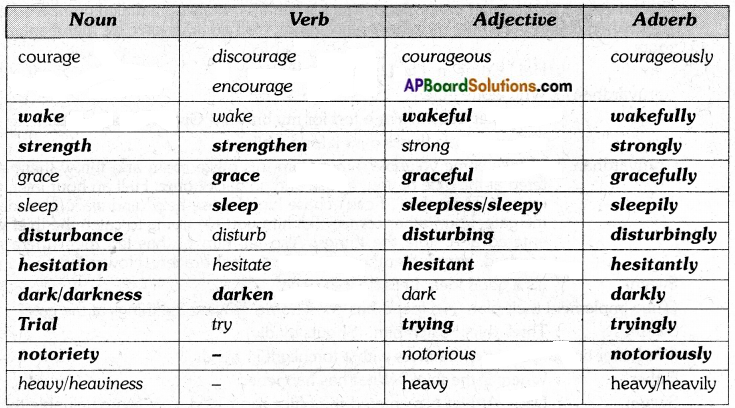
![]()
Try these tongue twisters
Three grey geese in a green field grazing.
Double bubble gum bubbles double.
Selfish Sal sells shell-fish.
How much wood would a woodchuck chuck if a woodchuck could chuck wood?
Listening and Speaking
I. Your teacher will read the story ‘Carried away by an Eagle’. Listen carefully and answer the questions that follow.
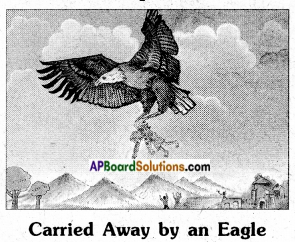
We often speak in fun about a bird carrying away a child. A mother might say to her little one, “Don’t be naughty, or a crow will carry you away.” But do such things really happen?
The following story however, is from real life. The place was a farmhouse near Trondheim in Norway. It was June 1932. A four-year-old child, Svenhild Hansen, was playing in the yard in front of the farmhouse. Suddenly a large eagle came down. It caught hold of the child in its claws and flew up. Luckily, only the child’s dress was held in his claws, so the child was not hurt.
The big bird carried the child for more than a kilometre. It was flying towards its nest. Eagles build their nests on high rocks. This one’s nest was on the side of a mountain.Growing tired, the bird put the child down on a flat rock. This rock was eight hundred feet high on the side of the mountain. The bird’s nest was just fifty feet away.
But by this time, the child’s mother and father, and a large party of men had set out to look for the child. They noticed the eagle flying round and round over a rock in the mountain. They thought that the child might be there, and climbed quickly to the place. But they did not have much hope that they would find her alive.
When they finally reached there, the little Svenhild was fast asleep. She was not even hurt except for a few scratches.
People say that usually, an eagle kills the animal it catches, before taking it to its nest. Why didn’t the eagle kill the child? We do not know. We can only say that the child was very, very lucky.
Svenhild is now a grown-up woman. She is married. But she still keeps the tom dress she wore during this amazing adventure.
![]()
1. How old was the child when she was picked up by the eagle?
Answer:
She was four years old.
2. In which country did the child live when she was picked up by the eagle?
Answer:
Norway.
3. Why did the eagle leave the child on a rock?
Answer:
Because the eagle grew very tired then.
4. Why did the eagle fly round and round over the rock?
Answer:
Because the girl was put down on that rock.
5. Why do you think that the girl was lucky?
Answer:
Because she was neither killed nor hurt.
6. Why do you think Svenhild still keeps the tom dress?
Answer:
To remember that amazing adventure.
II. Work in groups and retell the story ‘Carried away by an Eagle’ in your own words.
A four-year old girl named Svenhild Hansen, was in the yard in front of the farm house near Trondheium in Norway, in June 1932. Suddenly, she was picked up by the a large eagle in its claws. The bird was carrying the child away towards its nest on the side of a mountain. The girl’s dress was held in the claws of the eagle and so she was not hurt.
Being tired, the eagle put the girl on a flat rock on the side of a mountain. The bird’s nest was just 50 feet away.
Then the child’s parents came there with a large party of men who had noticed the eagle flying round and round over a rock in the mountain. They thought that the eagle might have killed the girl there. They climbed quickly to the place.
To their surprise and happiness, they found the girl fast asleep. She was not hurt except for a few scratches. Really she was lucky. The girl grew up and got married. But she kept the tom dress with her to recollect that amazing adventure.
![]()
A Hero Summary in English
One day Swami’s father was sitting under the hall lamp and reading the newspaper. When Swami came to him, he read out the news of the bravery of a village lad who was returning home by the jungle path. The lad, then, came face to face with a tiger. But he was not frightened. Instead, he flew up to a tree and stayed on it for half a day. At last some people came that way and killed the tiger. Then Swami told his father that a boy could not fight a tiger. His father said that courage is everything; strength and age don’t matter much. Swami’s father told Swami to prove his courage by sleeping alone in his office room that r night. Swami could not sleep alone. He always slept beside his granny in the porch. He would be trembling and awake all night if he did not sleep beside his granny. So he requested his father to let him do it from the first of next month. But his father did not agree. When Swami was sleeping by his granny as usual, his father came and woke him up. He then took him into his office room and order him to sleep on one of the benches in the room, alone. He put out the lights, but left the door open and went out. Swami was alone. He was afraid.
Swami spread his bed under the bench and crouched there. Soon he fell asleep. He had a dream that a tiger was chasing him. Swami tried to open his eyes but failed. So he groaned in despair.
Suddenly Swami heard a little rustling noise in the darkness. Swami was afraid that a devil was coming. But it was nothing but a thief that entered the office room as the door was kept open. The thief came very close to him. At once Swami clutched his leg and dug his teeth in. .
The thief, then,, cried out that something had bitten his leg. Everyone in the house was awakened by the loud noise. Father and a servant came running with a light. Both of them caught hold of the thief. The thief was later taken a way by the police.
The next day, Swami’s classmates praised him. His teacher patted him for his courage and bravery. The headmaster said that Swami had bitten into the knee of a notorious house breaker and the police were grateful to him. ,
When father returned home that night, Swami, instead of sleeping alone in the office room, was seen sleeping beside his granny. His mother stopped his father from wakening him up.
![]()
A Hero Glossary
crossly (adv): a little angrily
scowl (n): an angry look or expression.
porch (n): a covered entrance to a building; a verandah.
sternly (adv): seriously and strictly.
disgraceful (adj): very bad; shameful.
tiptoed (v): walked quietly on the tips of his toes
curled (v): drew up his legs close to the body and curved his back
snoring (v): breathing roughly and noisily while sleeping
stirred (v): moved slightly
groaned (v): made a deep sad sound.
pleaded (v): requested
scorpions (n): small creatures with a poisonous sting in the long tail
laughing-stock: someone or something which seems stupid
tumbling (v): falling helplessly
scout (n): one who is trained in doing acts of public service
notorious (adj): well-known for some bad quality or act
faint (v): likely to lose consciousness
crouched (v): bent the knees close to the body in fear
encased (v): covered himself completely
crawled (v): moved slowly, keeping the body close to the ground
bravery (n): courage
lad (n): boy
![]()
path (n): way
jungle (n): forest
account (n): a written or spoken description of something that has happened,
coward (n): timid
beside (prep): by the side of
tremble (v): shake in a way that you cannot control
humbly (adv): politely
quietly (adv): silently (without making a noise)
whispered (v): spoke in a very low voice so that others could not hear it well
commanded (v): strongly ordered

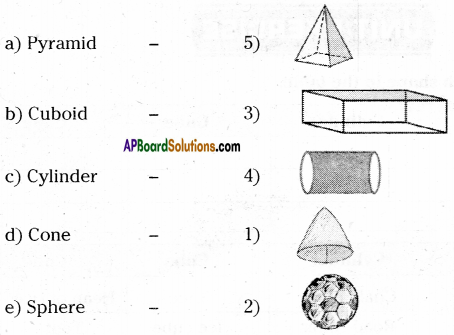
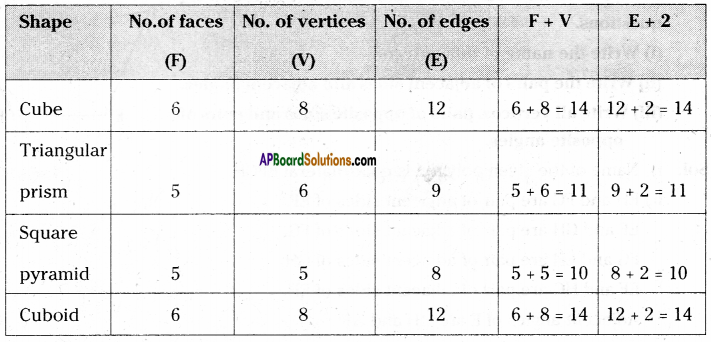
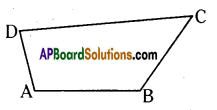


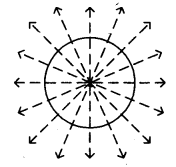
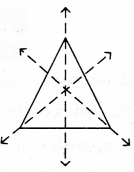
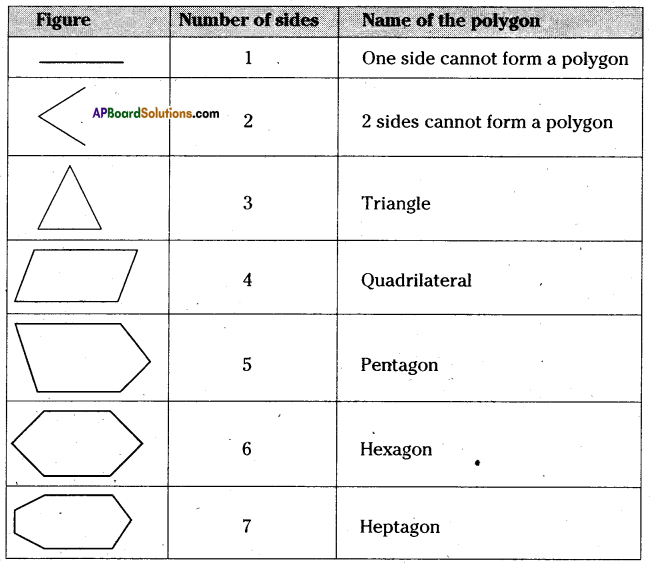
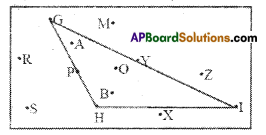
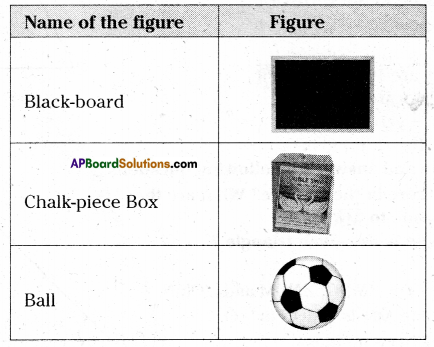

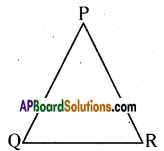


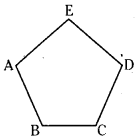

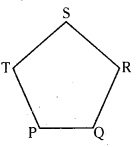

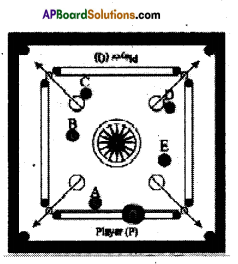
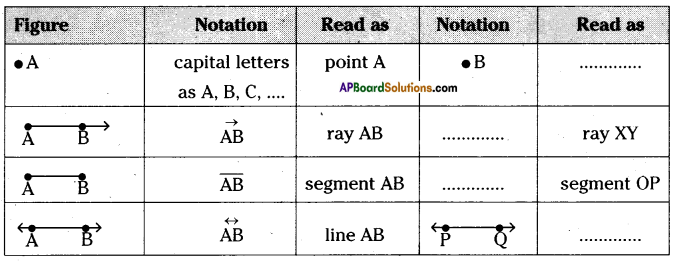


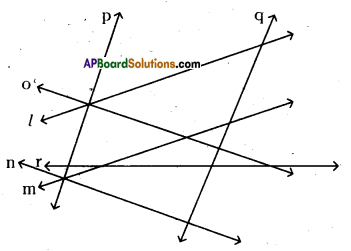

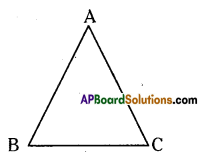
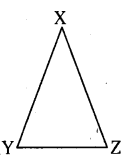
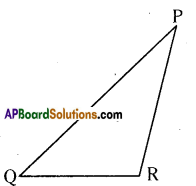

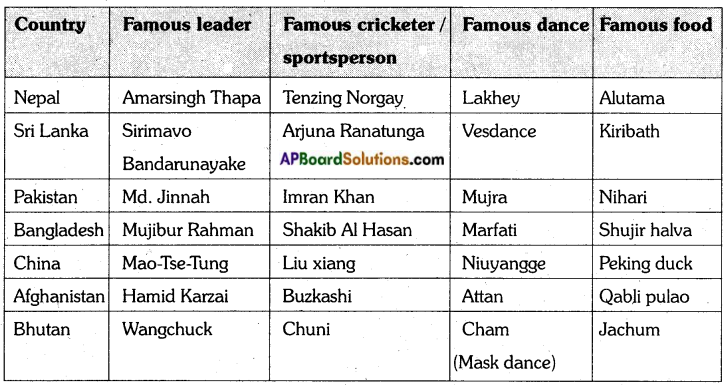
 Continue the same shape for 2 times, 3 times and 4 times. Frame the rule for repeating the pattern.
Continue the same shape for 2 times, 3 times and 4 times. Frame the rule for repeating the pattern.








